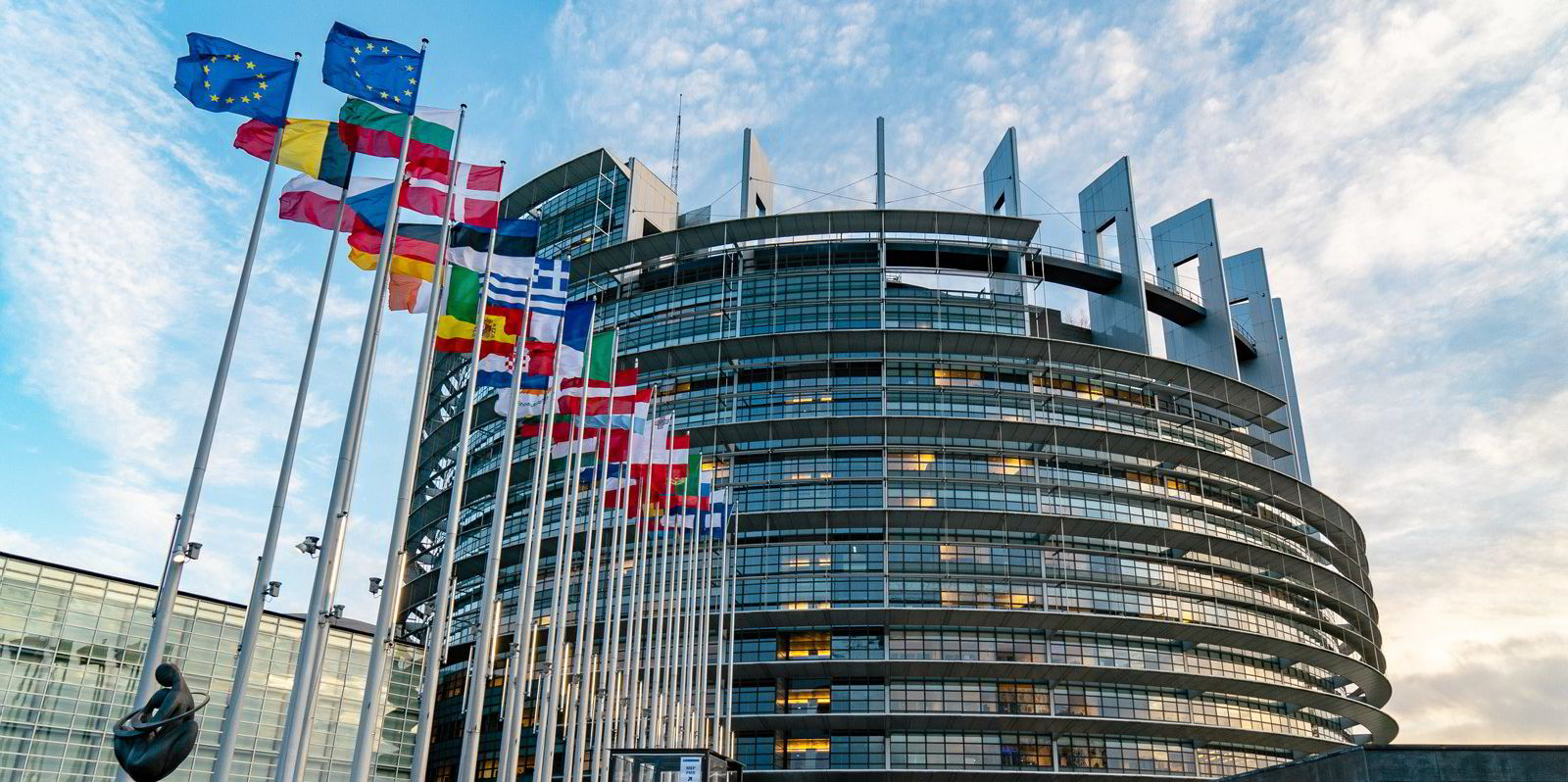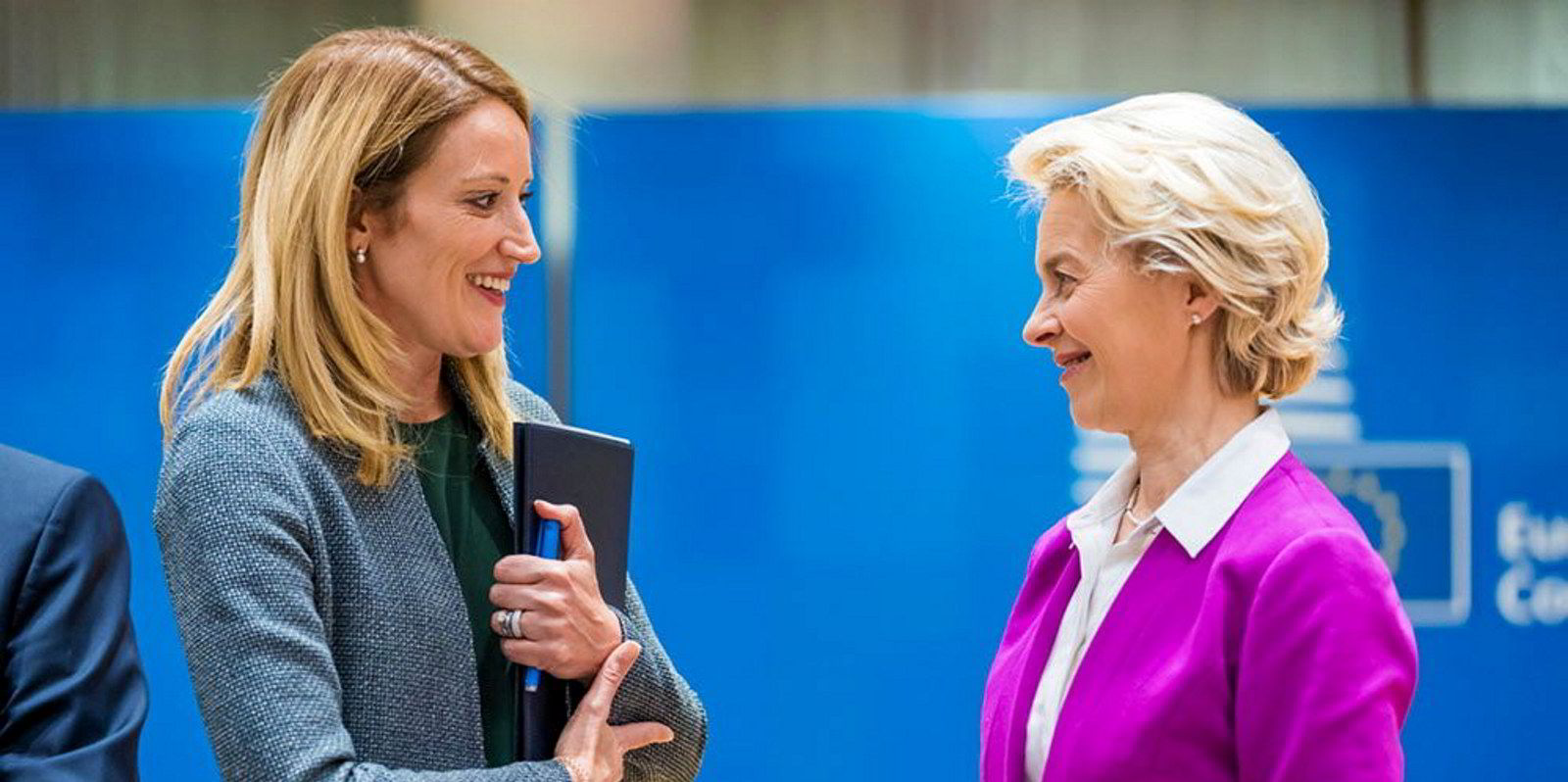Shipping’s carbon experts have been digging into a treasure trove of data recently reported to Brussels from all the ships that called at European Union ports in 2022 and found about 129m tonnes of CO2 pumped into the atmosphere.
While they may have come up with roughly the same number, there are a variety of views about the impact that a new set of rules on greenhouse gas emissions will have on ships in EU trades.
There are a little more than five months to go before ships that carry cargoes or passengers to, from or within the 27-nation bloc have to comply with the Emissions Trading System (ETS), and FuelEU Maritime enters force a year later.
The ETS will require those ships to pay for the right to emit greenhouse gases by buying what are known as allowances, while FuelEU Maritime will begin imposing a steadily shrinking cap on the carbon intensity of the energy that ships use.
Mattia Ferracchiato, the head of the carbon desk at Paris-headquartered BRS Shipbrokers, said shipping will have to buy carbon allowances to cover 32m tonnes of 2024 emissions. That number factors in the fact that the emissions trading rules are phased in over three years, only cover 50% of voyages into or out of the EU, and contain exceptions for trips to small islands and overseas territories.
The figure translates into a €2.75bn ($3.05bn) bill for the industry in the first year, which works out to about €230,000 for the average ship, he told TradeWinds’ Green Seas podcast.
And based on his experience as a carbon trader for other industries before joining BRS in 2021, he believes that will lead to changes by the biggest emitting shipping sectors first. And that means liner shipping, such as container ships, cruise ships and ferries, because they make up more than half of the emissions reported to the EU.
“They would probably be the sector’s decarbonising first because they will have the highest costs,” he said. “And that seems to be confirmed if we check the orderbooks.”
Alternative fuel newbuilds
Shipyard orderbooks show that shipowners in these sectors have been leading the charge on adopting alternative fuels, primarily LNG and more recently methanol, and these newbuildings are more likely to be deployed to EU trades.
Ferracchiato said other sectors, such as dry and liquid bulk, have already shown a willingness to slow down and increase efficiency in high-fuel price environments.

The European Emissions Trading System (ETS) was set up in 2005, but shipping will enter in 2024 after the European Parliament approved revisions in a directive on 18 April.
• Vessels over 5,000 gt that call at EU ports will be subject to the law at the start. The minimum size drops down to 400 gt in January 2025. The addition of smaller ships brought praise from climate tech industry participants who say these vessels can more readily adopt zero-carbon kit.
• For those ships that are covered starting next year, companies must buy allowances 40% of emissions in 2024, 70% the following year and 100% in 2026. Ships travelling to or from outside the EU will get a 50% discount.
• The shipping company named on a vessel’s document of compliance is responsible for administering compliance, even though its commercial operator is ultimately on the hook for paying the cost of emissions allowances.
• Those companies will have to buy allowances not just for carbon dioxide but also for methane and nitrous oxide. Including methane emissions will impact ships that use LNG as a fuel, while charging for nitrous oxide will impact future vessels that run on ammonia.
They will probably turn to those measures to comply with new EU rules, shifting new vessels and more efficient eco ships to European trades, sending older vessels elsewhere.
Prices for EU carbon allowances have varied between €80 and €100 per tonne of CO2 over the last year.
Ingrid Kylstad, sustainability lead at ZeroLab by Torvald Klaveness, said that is a figure that will open conversations between shipping companies and their customers.
“It also has opened up a new way of discussing with cargo owners the importance of looking into how you can reduce emissions from shipping, because it will have an impact on the freight rates,” she told Future Bound, a podcast by Oslo-listed shipowner Klaveness Combination Carriers.
Carbon allowances could add $4 per tonne to the cost of, for example, shipping grain from Brazil to Europe on a panamax bulk carrier, which is enough to spark a discussion on ways to collaborate on reducing emissions — although not yet.
She said cargo owners are still not aware of the impact EU emissions trading will have on freight rates right now.
But Jacob Armstrong, sustainable shipping manager at green lobby group Transport & Environment, is sceptical that the ETS legislation will spur shipping companies to decarbonise by putting a price on greenhouse gas emissions.
“Putting a price on carbon is not going to have a massive impact on emissions,” he told Green Seas. “It’s quite a clear reason why, really. It’s because shipping is quite good at internalising and passing on costs.”
He said those costs will be passed on to customers.
Instead, it is FuelEU Maritime that is likely to have a bigger impactafter the first decade.
But Transport & Environment recently released analysis concluding that the EU’s current decarbonisation rules would leave shipping to the bloc’s ports reliant on fossil fuels beyond 2050.
That means it will not align the industry’s emissions reductions with the Paris Agreement goal of halting global temperature rises at 1.5C.
So the group wants to see revenue from the new rules invested into subsidies for green fuels, and it encourages Brussels to make its targets more ambitious.
“And we think there is a big, big gap in the short term and in the medium term in terms of what ships can do on energy efficiency,” Armstrong said.

________________
‘Too expensive’ | US state refuses lone offshore wind bid by Orsted JV on cost concerns
Citing cost concerns, the US state of Rhode Island’s main energy utility has decided not to advance the single project proposal submitted into a second solicitation for offshore wind capacity, as Recharge reports.
The joint venture of Orsted and New England utility Eversource was the only respondent to the state’s request for proposals for between 600 MW and 1 GW of offshore wind capacity, which closed in March with its 880-MW Revolution Wind 2 project.
The JV is already contracted to send 400 MW of its 704-MW Revolution Wind 1 project to the Ocean State, with the remainder heading to neighbouring Connecticut.
________________
Blow to UK’s offshore wind plans as Vattenfall halts giant North Sea project over soaring costs
Recharge reports that Sweden’s Vattenfall raised a huge question mark over the viability of UK offshore wind as it halted plans for a project due to form part of one of the world’s biggest developments on profitability grounds in the face of soaring costs.
The utility group said it will stop development of the 1.4-GW Norfolk Boreas project “in its current form and not take an investment decision now”.
Vattenfall said it will also “examine the best way forward” for the rest of its Norfolk zone, which also includes the same-sized Norfolk Vanguard project and totals some 4.2 GW.
________________
Evangelos Marinakis’ Capital Maritime splashes $145m on world’s biggest CO2 carriers at Hyundai Mipo
Gary Dixon writes that Greek owner Evangelos Marinakis’ Capital Maritime & Trading has taken a plunge into CO2 shipping with a new order in South Korea.
HD Korea Shipbuilding & Marine Engineering (KSOE) said on Wednesday it had agreed a deal to build two 22,000-cbm liquid CO2 (LCO2) vessels at its Hyundai Mipo Dockyard unit.
The vessels are the biggest ordered so far in what KSOE called a growing market.



